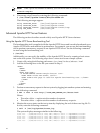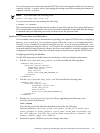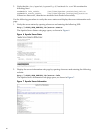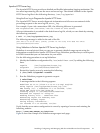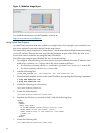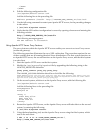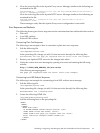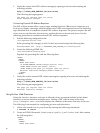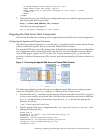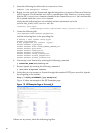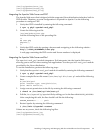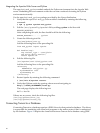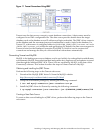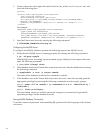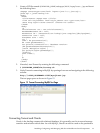3. Verify the custom local URL redirect message by opening a browser and entering the
following website:
http://<YOUR_WEB_SERVER_IP>/non-exist
The following message appears:
The page you request does not exist!
Local redirects example
Customizing External URL Redirect Responses
The URL redirect feature allows you to trap a missing link error (404 error) in a browser on a
local server, display a message, and then redirect it to a URL on an external server. The following
steps illustrate how to customize external URL redirect responses. The process requires the use
of two servers; one that acts as local server, another that acts as an external server. Use the
following procedure to customize external URL redirect responses:
1. Edit the following configuration file:
/etc/apache2/errors.conf
In the preceding file, change (or add, if it does not exist already) the following line:
ErrorDocument 404 http://<EXTERNAL_WEB_SERVER_IP>/missing.html
2. Create the following HTML file:
/srv/www/htdocs/missing.html
Populate the preceding file with the following lines:
<HTML>
<HEAD>
</HEAD>
<BODY DIR="LTR">
<P ALIGN=CENTER STYLE="margin-bottom: 0cm">
<FONT FACE="Times New Roman, serif">
<FONT SIZE=6>The page you request does not exist!
External redirects example</FONT></FONT></P>
</BODY>
</HTML>
3. Verify the custom external URL redirect message by opening a browser and entering the
following website:
http://<YOUR_WEB_SERVER_IP>/non-exist
The following message appears:
The page you request does not exist!
External redirects example
Using Per-User Web Directories
Using the UserDir function, each user is allowed to have a personal website in their home
directory on servers that have multiple users. Visiting a URL with its name in the form
http://example.com/~username displays the contents of the home directory of the user.
The following is an example for configuring per-user web directories:
1. Add a user named tester to your server by entering the following commands:
# useradd -m tester
2. Create an HTML file named /home/tester/public_html/index.html that contains
the following lines:
<HTML>
<HEAD>
</HEAD>
<BODY DIR="LTR">
26



